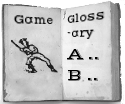Round Town (Round Town Ball): Difference between revisions
No edit summary |
No edit summary |
||
| Line 14: | Line 14: | ||
|Sources=<p><span>[A] J. Lambert and H. Reinhard, </span><em>A History of Catasaqua in Lehigh County</em><span> (Searle and Dressler, Allentown, 1914), page 364.</span></p> | |Sources=<p><span>[A] J. Lambert and H. Reinhard, </span><em>A History of Catasaqua in Lehigh County</em><span> (Searle and Dressler, Allentown, 1914), page 364.</span></p> | ||
<p><span>[A]William F. Mason, <span style="text-decoration: underline;">The Journal of William Franklin Mason</span>, completed in 1954; from <a href="http://ftp.rootsweb.com/pub/usgenweb/ky/elliott/mason/mason29.txt">http://ftp.rootsweb.com/pub/usgenweb/ky/elliott/mason/ mason29.txt</a>, accessed 2/24/2008.</span></p> | <p><span>[A]William F. Mason, <span style="text-decoration: underline;">The Journal of William Franklin Mason</span>, completed in 1954; from <a href="http://ftp.rootsweb.com/pub/usgenweb/ky/elliott/mason/mason29.txt">http://ftp.rootsweb.com/pub/usgenweb/ky/elliott/mason/ mason29.txt</a>, accessed 2/24/2008.</span></p> | ||
<p><span>[B] New York Clipper January 1866. | <p><span>[B] New York Clipper January 1866. 19CBB post 2/2/2002 by John Freyer</span></p> | ||
|Has Supplemental Text=No | |Has Supplemental Text=No | ||
}} | }} | ||
Revision as of 06:59, 2 February 2016
| Game | Round Town (Round Town Ball) |
|---|---|
| Game Family | Baseball |
| Location | PA, VA |
| Regions | US |
| Eras | Predecessor, 1800s |
| Invented | No |
| Tags | |
| Description | [A] As played in Eastern PA in the 1850s this game is recalled as having four or five bases or “safety spots,” tagging instead of plugging, the fly rule, the sharing of bases by multiple runners, and a bat made of a rail or clap-board. A game “similar to baseball” recalled as being played by school boys in 1891 in a grove of trees in Beech Grove, Kentucky. [B] Another game called Round Town is described as follows: An Old Virginia Ball Game
The game of round-town is played in this manner: Two sides are formed, the number of players of the division being equal. Four bases are used and are placed in the same manner as if they were being fixed for a game of baseball, although men are only placed in the positions of the pitcher, catcher, and first baseman, the rest of the players being scattered in the field where they think the ball is most apt to be knocked. The first batsman on the opposing side takes his place at the plate, and he has in his hand a paddle an inch or two thick, and in which only one hand is used ins striking. The pitcher delivers a solid gum ball with all the swiftness attainable, the use of the curve never being thought of, and it is therefore very seldom that a "strike out" occurs. The batter hits the ball at the first opportunity and endeavors to drive it over the heads of the opponents, for if it is caught on the fly or the first bound the runner is called out, and also if it is begotten to the first baseman before the runner arrives at the base. Should the runner reach first base safely he can continue to run to the other bases if he wishes, but his opponents have the privilege of hitting him with the ball, and as it is very painful to be struck with a gum ball, the runner is very cautious, and if he is struck he is counted out of the game, although should he reach any of the other bases he is safe.
|
| Sources | [A] J. Lambert and H. Reinhard, A History of Catasaqua in Lehigh County (Searle and Dressler, Allentown, 1914), page 364. [A]William F. Mason, The Journal of William Franklin Mason, completed in 1954; from http://ftp.rootsweb.com/pub/usgenweb/ky/elliott/mason/ mason29.txt, accessed 2/24/2008. [B] New York Clipper January 1866. 19CBB post 2/2/2002 by John Freyer |
| Source Image | [[Image:|left|thumb]] |
| Comment | Edit with form to add a comment |
| Query | Edit with form to add a query |
| Has Supplemental Text |
Comments
<comments voting="Plus" />
